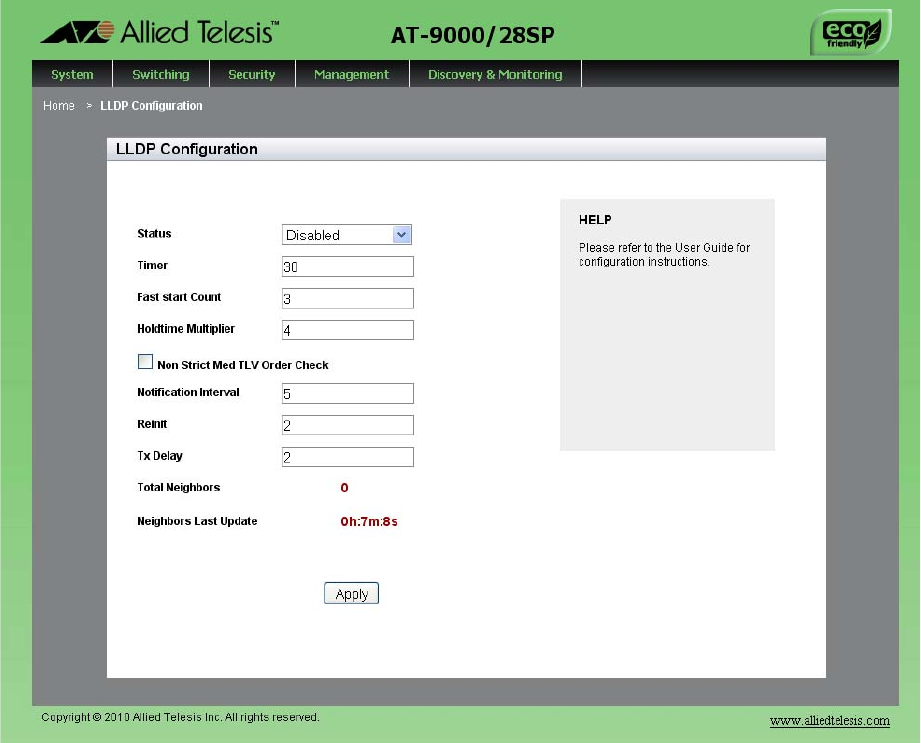User's Manual
Table Of Contents
- Contents
- Figures
- Preface
- Chapter 1
- AlliedWare Plus™ Version 2.1.2 Web Browser Interface
- Chapter 2
- Starting a Management Session
- Chapter 3
- Basic Switch Parameters
- Setting the System Date and Time
- Setting a Telnet or SSH Server
- Setting a Remote Log Server
- Setting the Switch Information
- Setting the Configuration File
- Managing User Accounts
- Rebooting a Switch
- Upgrading the Software
- Returning the AlliedWare Plus Management Software to the Factory Default Values
- Displaying System Information
- Chapter 4
- Setting Port Parameters
- Chapter 5
- Setting Port Statistics
- Chapter 6
- Setting Port Mirroring
- Chapter 7
- Setting the Port Spanning Tree Protocol
- Chapter 8
- Setting the MAC Address
- Chapter 9
- Setting LACP
- Chapter 10
- Setting Static Port Trunks
- Chapter 11
- Setting Port-based and Tagged VLANs
- Chapter 12
- Setting Switch Spanning Tree Protocols
- Chapter 13
- Setting Internet Group Management Protocol (IGMP) Snooping
- Chapter 14
- Setting MAC Address-based Port Security
- Chapter 15
- Setting RADIUS and TACACS+ Clients
- Chapter 16
- Setting 802.1x Port-based Network Access
- Chapter 17
- Setting IPv4 and IPv6 Management
- Chapter 18
- Setting LLDP and LLDP-MED
- Chapter 19
- Setting sFlow

AlliedWare Plus Version 2.1.2 Management Software Web Browser User’s Guide
211
The LLDP Configuration page is displayed. See Figure 76.
Figure 76. LLDP Configuration Page
4. Change the following fields as needed:
Status— Indicates whether LLDP is enabled or disabled on the
switch. By default, LLDP is disabled on the switch.
Timer— Specifies the transmit interval. The range is 5 to 32,768
seconds.
Fast Start Count— Indicates the fast start count for LLDP-MED.
The fast start count determines how many fast start
advertisements LLDP sends from a port when it begins sending
LLDP-MED advertisements from a port, for instance when it
detects a new LLDP-MED capable device. The default value is 3.
Holdtime Multiplier— Sets the holdtime multiplier value. The
transmit interval is multiplied by the holdtime multiplier to give the
Time To Live (TTL) the switch advertises to the neighbors. The
range is 2 to 10.










